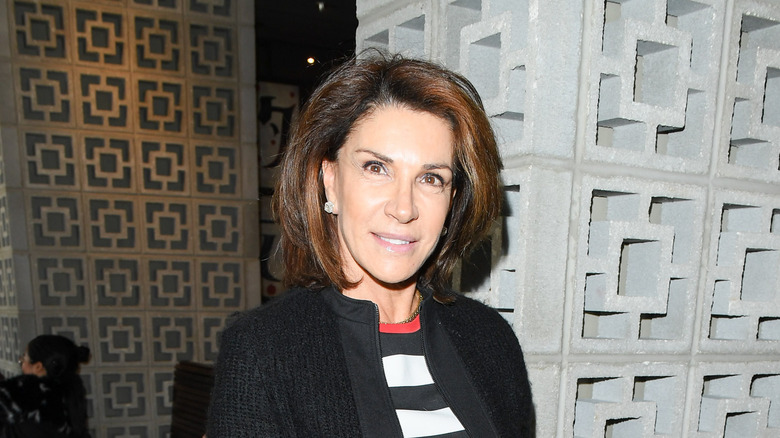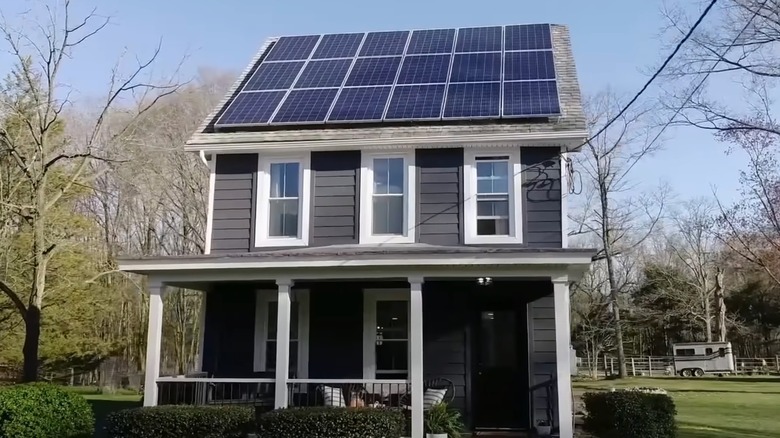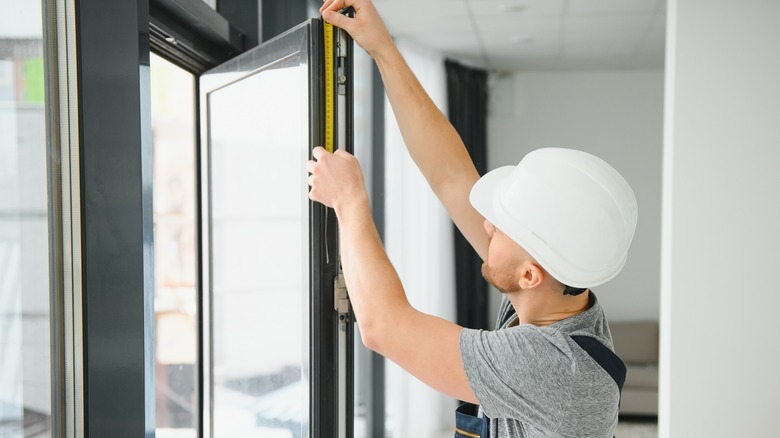HGTV's Hilary Farr Replaces Two Features To Completely Change The Look Of A Home
Hilary Farr has proved herself to be a design master by transforming homes on really tight budgets. But Farr has also shown that sometimes simple swaps can make the biggest difference. She proves you don't always need a major or extensive renovation; sometimes, a refresh is what's necessary. In Season 1, Episode 3 of HGTV's "Tough Love With Hilary Farr," she renovated a century-old farmhouse that gave the exterior new life by replacing the siding and the windows.
"Let's start on the exterior," Farr said to her clients in the design meeting. "We'll replace all the old windows and siding, which will completely change the way it looks. Your home will look as beautiful on the outside as it's going to look on the inside." The original siding was green-painted wood that was peeling due to age and weather. Replaced with gray siding, the home looked much more updated and contemporary.
The modern materials updated the appearance of the home, giving it a boost in curb appeal. However, these two replacements weren't the only benefits to the home's exterior aesthetic. Upgrading both the windows and siding also improved the home's functionality and protected the home's interior. So, not only did Farr create a home that looked refreshed, but she also offered an upgraded utility that would benefit the family in the long run.
New siding is an essential swap
The century-old farmhouse Hilary Farr designed for her clients needed a refresh on both the interior and exterior. Farr had the rotted wood siding replaced with vinyl that's meant to last for years to come. While wood siding can add charm to a home, it's often not the best option to use for siding. Wood presents a fire risk because it's very combustible. Wood also doesn't have the same durability as vinyl and requires much more maintenance. Sealing wood siding is necessary to keep moisture out and should be done every two years. Paint and stain can also be used to help seal the wood and protect it from potential damage.
Vinyl, on the other hand, is much more fire-resistant, which can offer your home more protection. Since vinyl is a form of plastic, it's naturally resistant to water. However, to make the exterior waterproof, proper materials must be placed underneath the siding during installation. When properly installed, vinyl is a great option to protect the home from weather and prevent unwanted moisture from getting inside, which also prevents mold growth and rot. It's also a popular option because it's available in a variety of styles and colors. It's also inexpensive. Costing between $1 and $12 per square foot, depending on the type of siding, vinyl can be one of the most inexpensive materials for a home's exterior.
Upgraded windows mean better efficiency
New vinyl siding wasn't the only replacement Hilary Farr did for her clients; she also added new energy-efficient windows throughout the home. Of course, on the exterior, the windows helped to update the look of the farmhouse. But what's really important is the upgraded efficiency. Older windows tend to be less efficient because they're made using single glass panes. Single-pane glass windows are not as insulating, allowing interior air to escape outside and exterior air to flow inside much easier. This results in a home that can be drafty and difficult to heat or cool, depending on the season.
Energy-efficient windows tend to be double- or triple-paned and made with low-emissivity (Low-E) glass, which helps to filter UV light. Argon gas is placed in between the window panes as insulation, which helps maintain a room's temperature. The insulation also helps keep cool air inside during warmer months and heat inside during the colder months. Preventing the air from escaping helps keep the interior temperature stable so the HVAC system doesn't have to work overtime.
Energy-efficient windows can be an upfront investment, costing between $180 and $410 per window, depending on the size and glass type. This cost does not factor in the cost of labor. Homeowners can often expect a return on investment of as much as 68%. These windows can raise your home value plus save you about 12% on energy bills yearly. Hilary Farr chose these smart swaps that benefit both the home's interior and exterior.


